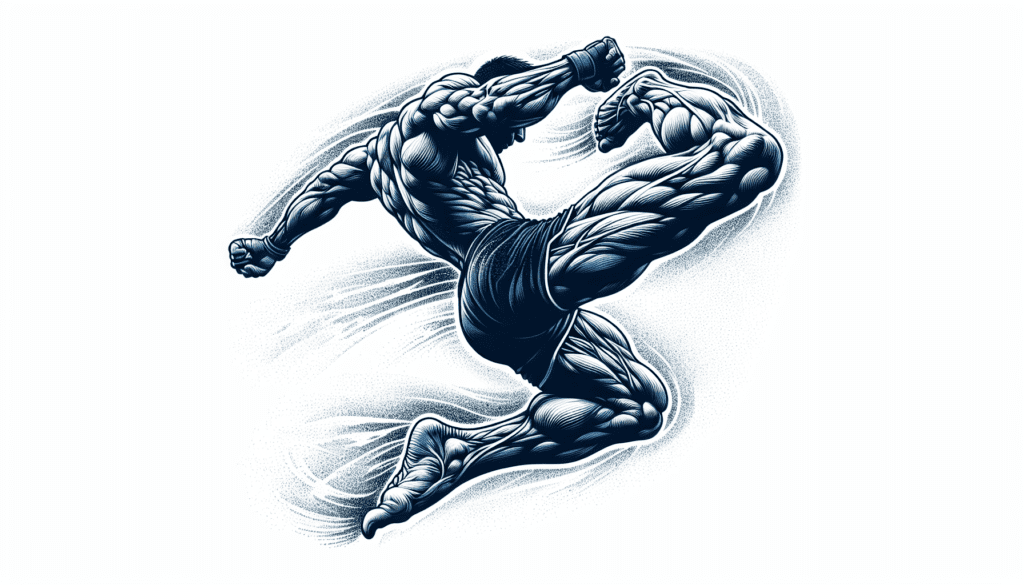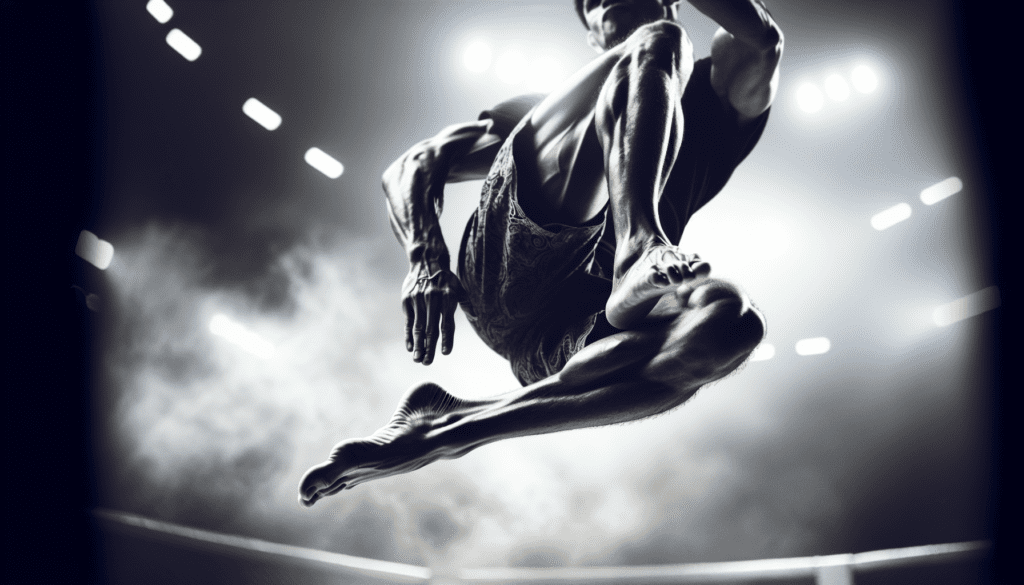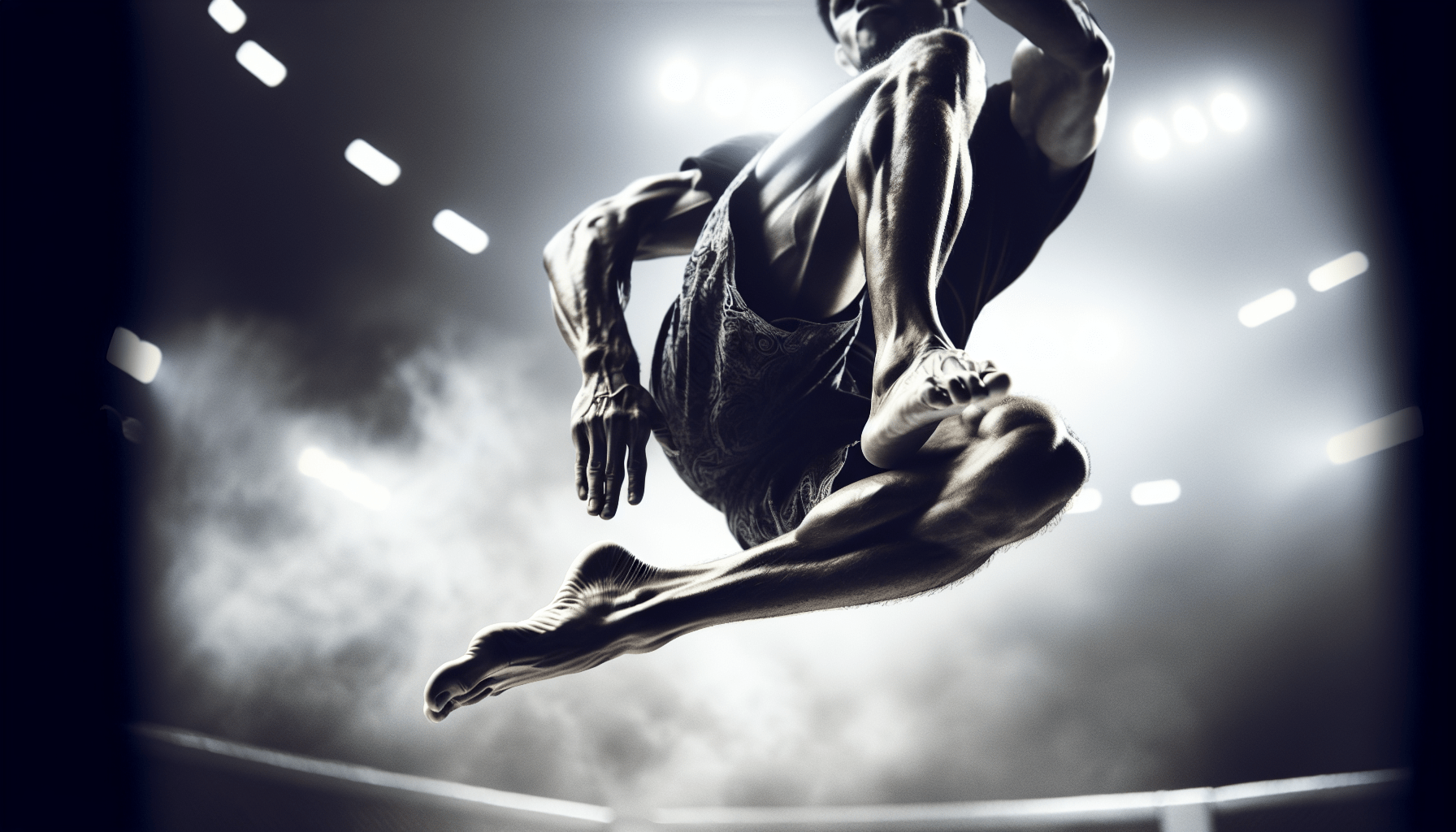Flexibility plays a crucial role in the world of Mixed Martial Arts (MMA) when it comes to preventing injuries. It allows fighters to move fluidly, react swiftly, and execute techniques with precision. In this article, you will explore why flexibility is essential for injury prevention in MMA, how it helps improve overall performance, and various methods to develop flexibility in your training regimen. So, tighten your gloves, prepare to stretch your limits, and discover the key to success in the octagon.
What is MMA?
Mixed Martial Arts (MMA)
Mixed Martial Arts, commonly known as MMA, is a full contact combat sport that allows fighters to use a variety of techniques from different martial arts disciplines. It combines striking, grappling, and various other combat techniques to create a dynamic and exciting fighting style. MMA has gained significant popularity in recent years, with events such as the Ultimate Fighting Championship (UFC) showcasing the skills and athleticism of its athletes.
Origins of MMA
The origins of MMA can be traced back to ancient civilizations, where various forms of mixed combat were practiced as a means of entertainment, self-defense, or military training. However, modern MMA as we know it today was popularized in the early 1990s with the introduction of the UFC. The UFC sought to determine which martial arts discipline was the most effective by pitting practitioners of different styles against each other in a controlled environment. This led to the development of a hybrid fighting style that incorporated elements from various martial arts, giving birth to MMA as we know it today.
The Importance of Injury Prevention
Risks and injuries in MMA
MMA is a physically demanding sport that involves intense training and high-impact combat. As with any contact sport, there is a risk of injuries, ranging from minor bruises and sprains to more severe injuries such as fractures and concussions. Common injuries in MMA include joint sprains, muscle strains, and facial cuts. The rigorous nature of training and competition, along with the unpredictable nature of combat, makes it crucial for MMA athletes to prioritize injury prevention.
The impact of injuries on performance
Injuries can have a significant impact on an MMA athlete’s performance, both in training and during actual fights. When an athlete is injured, they may be forced to take time off from training or competition, which can disrupt their training routine and hinder their progress. Additionally, injuries can affect an athlete’s performance during a fight, as they may not be able to perform at their full potential or execute their techniques with precision. Injury prevention is therefore of utmost importance for MMA athletes to maintain their physical condition and perform at their best.

Flexibility in MMA
Definition of flexibility
Flexibility refers to the ability of a joint or group of muscles to move through a full range of motion without experiencing pain or restriction. In the context of MMA, flexibility is crucial for executing techniques effectively and efficiently. It allows fighters to generate power, maintain balance, and avoid strain or injury during combat. Without adequate flexibility, athletes may struggle to perform certain techniques and be more prone to injuries.
Types of flexibility in MMA
In MMA, there are various types of flexibility that athletes need to develop to excel in their sport. Dynamic flexibility is the ability to move a joint through its full range of motion with control and without excessive force. This type of flexibility is essential for smooth and fluid movement during combat. Static flexibility refers to the ability to hold a stretched position without discomfort or resistance. It is important for maintaining flexibility in specific positions during grappling or ground fighting. Active flexibility is the ability to use muscular strength to actively achieve and maintain a stretched position. This type of flexibility is crucial for explosive movements and quick transitions between techniques.
Benefits of Flexibility for Injury Prevention
Enhanced range of motion
One of the key benefits of flexibility training in MMA is enhanced range of motion. When athletes have a greater range of motion in their joints, they can execute techniques with greater ease and precision. This not only improves their performance but also reduces the risk of injury. For example, a fighter with good hip flexibility can generate more power in their kicks and punches while maintaining proper alignment and avoiding strain on the joints.
Improved muscular balance
Flexibility training helps improve muscular balance by ensuring that opposing muscle groups are equally flexible and strong. When there is an imbalance in flexibility between muscle groups, it can lead to poor biomechanics and increase the risk of injury. By incorporating flexibility exercises that target both agonist and antagonist muscle groups, MMA athletes can improve their muscular balance, reduce the risk of muscle imbalances, and enhance their overall performance.
Reduced muscle soreness and stiffness
Another benefit of flexibility training in MMA is the reduction of muscle soreness and stiffness. Intense training and competition can result in muscle fatigue and tightness, which can lead to discomfort and decreased performance. Flexibility exercises help improve blood flow to the muscles, increase their elasticity, and promote faster recovery. By incorporating regular flexibility training into their routine, MMA athletes can minimize muscle soreness and stiffness, allowing them to train and perform at their best.

Flexibility Training Techniques for MMA Athletes
Dynamic Stretching
Dynamic stretching involves moving a joint through its full range of motion in a controlled manner. It helps improve joint mobility, increase blood flow to the muscles, and prepare the body for physical activity. Dynamic stretching is particularly useful before training or a fight, as it helps warm up the muscles and enhance performance. Examples of dynamic stretching exercises for MMA include leg swings, arm circles, and trunk rotations.
Static Stretching
Static stretching involves holding a stretched position for a prolonged period. It helps improve flexibility and relaxes the muscles after intense physical activity. Static stretching is best performed after training or a fight, as it helps cool down the muscles and reduce post-exercise muscle tension. Examples of static stretching exercises for MMA include holding a standing quad stretch, a seated groin stretch, or a shoulder stretch against a wall.
Proprioceptive Neuromuscular Facilitation (PNF)
Proprioceptive Neuromuscular Facilitation (PNF) is a technique that combines stretching and contraction of the targeted muscle group to improve flexibility. PNF stretching involves a partner-assisted approach, where the partner provides resistance as the athlete contracts the opposing muscle group before stretching it. This technique helps promote increased range of motion and improved muscular flexibility. PNF stretching can be particularly effective for improving flexibility in areas such as the hips and shoulders, which are crucial for MMA movements.
Yoga and Pilates
Yoga and Pilates are popular forms of exercise that focus on flexibility, strength, and mindfulness. These practices incorporate a variety of stretching exercises and movements that improve overall flexibility, balance, and body awareness. Yoga and Pilates can be beneficial for MMA athletes as they help improve core strength, enhance flexibility, and promote mental focus and relaxation. Incorporating regular yoga or Pilates sessions into an MMA training program can contribute to improved performance and injury prevention.
Specific Areas of Flexibility for MMA Athletes
Hip and Groin flexibility
Hip and groin flexibility is crucial for MMA athletes, as it allows for effective kicking, striking, and ground fighting techniques. Adequate hip flexibility enables athletes to generate power and execute techniques with proper form and alignment. Flexibility exercises such as hip rotations, butterfly stretches, and deep squats can help improve hip and groin flexibility, reducing the risk of injury and enhancing performance.
Shoulder and Upper Body flexibility
Shoulder and upper body flexibility is essential for MMA athletes, as it allows for efficient punching, grappling, and defensive movements. Good shoulder flexibility enhances striking power, enables effective shoulder locks and chokes, and helps prevent shoulder injuries. Stretching exercises such as shoulder circles, arm swings, and shoulder dislocations can help improve shoulder and upper body flexibility, promoting optimal performance and injury prevention.
Spinal and Core flexibility
Spinal and core flexibility is vital for MMA athletes, as it contributes to stability, balance, and efficient movement. A flexible spine allows for smooth transitions between techniques, enhances ground fighting skills, and improves overall agility. Core flexibility, which includes the muscles of the abdomen and lower back, is essential for generating power, maintaining balance, and protecting the spine. Exercises such as spinal rotations, cat-cow stretches, and planks can help improve spinal and core flexibility, reducing the risk of injury during training and fights.
Sample Flexibility Routine for MMA Athletes
Warm-up exercises
- Arm circles: Stand with feet shoulder-width apart and extend arms out to the sides. Make small circles with the arms, gradually increasing the size and speed of the circles.
- Leg swings: Stand next to a wall for support and swing one leg forward and backward, keeping the leg straight. Repeat on the other leg.
- Trunk rotations: Stand with feet shoulder-width apart and hands on hips. Rotate the torso to the left, then to the right, keeping the hips facing forward.
Specific stretching exercises for different body parts
- Standing quad stretch: Stand upright and bend one knee, bringing the foot towards the glutes. Hold onto the ankle or foot with one hand and gently pull towards the body until a stretch is felt in the front of the thigh. Repeat on the other leg.
- Seated groin stretch: Sit on the floor with the soles of the feet together and knees bent out to the sides. Hold onto the feet and gently press the knees towards the floor until a stretch is felt in the groin area.
- Wall shoulder stretch: Stand facing a wall with one arm extended forward at shoulder height. Place the palm of the hand against the wall and slowly rotate the body away from the wall until a stretch is felt in the shoulder. Repeat on the other side.
Cool-down exercises
- Standing hamstring stretch: Stand upright and place one foot on an elevated surface, keeping the leg straight. Slowly lean forward from the hips until a stretch is felt in the back of the thigh. Repeat on the other leg.
- Child’s pose: Kneel on the floor and sit back on the heels. Lower the torso forward, extending the arms in front and resting the forehead on the floor. Hold the stretch and focus on deep breathing.
Common Mistakes in Flexibility Training
Skipping warm-up and cool-down
Skipping the warm-up and cool-down phases of a flexibility training session is a common mistake that athletes make. These phases are crucial for preparing the body for exercise and aiding in recovery. Warm-up exercises increase blood flow to the muscles, raise body temperature, and improve joint mobility, while cool-down exercises help decrease muscle soreness, promote relaxation, and gradually lower the heart rate. By neglecting these important steps, athletes increase their risk of injury and hinder their performance.
Overstretching
Overstretching, or stretching beyond a comfortable range of motion, is another common mistake that athletes should avoid. Overstretching can lead to muscle strains, tears, and joint instability. It is essential to stretch to the point of mild tension, rather than pain, and to progress gradually as flexibility improves. Always listen to your body and avoid pushing beyond its limits to prevent injury.
Neglecting specific body parts
Focusing only on the major muscle groups and neglecting specific body parts is a mistake that can lead to muscle imbalances and increased risk of injury. It is important to include flexibility exercises that target all muscle groups, including those in the hips, shoulders, and core. Neglecting certain areas can result in poor body mechanics and decreased performance in specific techniques. By incorporating a well-rounded flexibility routine that addresses all body parts, athletes can improve their overall flexibility and reduce the risk of injury.
Supplementing Flexibility Training with Strength and Conditioning
Importance of strength and conditioning
While flexibility training is crucial for injury prevention in MMA, it should be supplemented with strength and conditioning exercises. Strength and conditioning training helps improve overall athletic performance, enhances muscular strength and power, and promotes injury resistance. By incorporating exercises such as weight lifting, plyometrics, and cardiovascular training into their routine, MMA athletes can develop a well-rounded fitness base that complements their flexibility training and maximizes their potential in the sport.
Tips for incorporating strength training into flexibility routine
When incorporating strength training into a flexibility routine, it is important to consider the following tips:
-
Prioritize compound exercises: Compound exercises such as squats, deadlifts, and bench press engage multiple muscle groups simultaneously, making them more time-efficient and effective for overall strength development.
-
Use proper form and technique: Proper form and technique are crucial to prevent injuries and maximize the benefits of strength training. It is recommended to seek guidance from a qualified strength and conditioning coach to ensure proper execution of exercises.
-
Balance upper and lower body training: MMA athletes should strive for balanced strength development between the upper and lower body. This helps maintain proper alignment, reduces the risk of muscle imbalances, and promotes overall athleticism.
-
Incorporate functional exercises: Functional exercises that mimic the movements performed in MMA, such as medicine ball throws, kettlebell swings, and suspension training, help improve the transfer of strength from the gym to the ring or cage.
-
Rest and recovery: Adequate rest and recovery are essential for muscular adaptation and injury prevention. Allow sufficient time between strength training sessions to allow the body to repair and rebuild.
Conclusion
The role of flexibility in injury prevention in MMA
Flexibility plays a vital role in injury prevention for MMA athletes. It enhances range of motion, improves muscular balance, and reduces muscle soreness and stiffness. By incorporating flexibility training techniques such as dynamic stretching, static stretching, PNF, and practices like yoga and Pilates, athletes can enhance their overall flexibility and reduce injury risk during training and competition.
Commitment to a comprehensive training program
To reap the benefits of flexibility training and minimize the risk of injuries, MMA athletes need to commit to a comprehensive training program that includes flexibility exercises, strength and conditioning training, proper warm-up and cool-down, and adequate rest and recovery. By prioritizing injury prevention and taking a proactive approach to their physical well-being, athletes can enhance their performance, prolong their careers, and enjoy the sport to its fullest potential.

